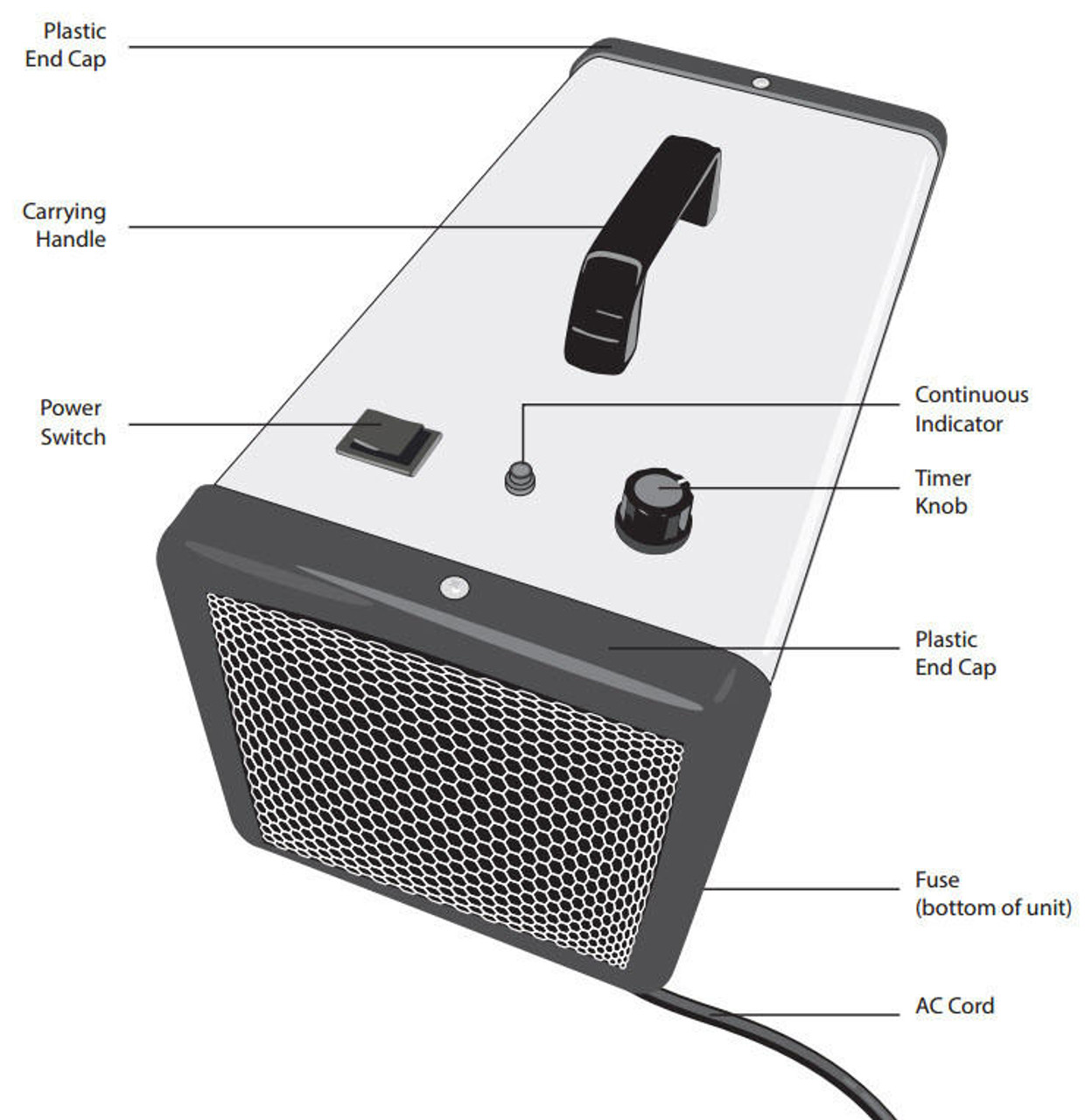Product Description
Hotels | Funeral Homes | Apartments | Offices | Schools | Hospitals | Nursing Homes | Buses & Shuttles | Vehicles | Boats | Fitness Centers | Day Care Centers | Warehouses
|
Size
|
8.2" W x 10" D x 17" L
|
|
Weight
|
9.5 LBS
|
|
Room Capacity
|
2500 Sq Ft
|
|
Voltage
|
120 Volts, 60 Hz, 65 Watts
|
|
Fan Output
|
212 CFM
|
|
Timer Control
|
Solid State 24 Hours, Continuous Output
|
|
Circuit Protection
|
1 Amp Fuse On/Off Switch
|
|
Filtration
|
Pre & Post Filter Carbon
|
|
Treatment Process
|
Carbon Filter & Twin Hydroxyl
UVC 254 NM Germicidal Chambers |
|
UV Lamp Type
|
UVC 254 NM Germicidal, Ozone Free
|
|
Reaction Surface
|
266.90 Sq In
25,000 Hour Life |
|
Warranty
|
2 Years
|
Atmospheric hydroxyl radicals should not be confused with free radicals that are produced in
side living organisms. Atmospheric hydroxyl radicals are so reactive that they are instantly neutralized when they make contact with any substance and would be impossible to ingest as a complete ion. This is the fact that makes hydroxyl radicals, which are in the outside air at all times during the day, one of the safest processes for deodorizing in an occupied area. Hydroxyls are formed in nature by the reaction of UV light from the sun disassembling water vapor (H20) to get a hydrogen atom and oxygen (O2) which are combined together to form the hydroxyl radical (*OH).
Technology Behind Radicals. All hydroxyl generators currently used in the restoration industry incorporate some form of UV light in their process. UV light has three major spectrums: A, B and C. UVA is in the 315nm to 400nm wavelength and is what is commonly referred to as a “black light,” which makes white things glow and is considered safe for vision and skin contact. UVA lamps do not produce ozone. UVB is in the 280nm to 315nm wavelength. These are the lights in tanning salons. UVC is the 100nm to 280nm wavelength. These lamps are “germicidal” and can damage your eyes and skin. UVC lamps in the 185nm spectrum produce large amounts of ozone.
Some manufacturers use UVC lamps in the 185nm to 254nm wavelength with no catalyst whatsoever and claim to make hydroxyls. These units are nothing more that ultraviolet ozone generators and should be avoided. Other manufacturers use the same UVC 185nm to 254nm wavelength UV lamps but also incorporate reactive metals like titanium as a catalyst to create hydroxyls. These machines would probably make more hydroxyls then the first process described above but they also produce ozone and should be considered for use in unoccupied areas only. The third technology which was developed with the National Aeronautics and Space Administration (NASA) utilizes UVC light in the 254nm wavelength to excite nano-sized particles of Titanium Dioxide to generate hydroxyl radicals.
This process has been deemed safe by NASA (it has been used in the space station) and also certified by the Federal Drug Administration (FDA) as a Type 2 Medical Device that is approved for use in hospitals, including neonatal and baby wards.
Recommended Maintenance Kits:
HG25FILKIT (Replacement Filters) and HG25LIGKIT (Replacement UV Light Kit)
Any device that pulls air through it requires cleaning and or preventative maintenance. Consider heating and air conditioning systems, automobile air filters, room air cleaners, etc. Newaire Hydroxyl Generators also require occasional maintenance to keep them operating at peak performance.
Product Videos
Videos Hide Videos Show Videos
-

How to Maintain your Newaire Hydroxyl Generator
Proper maintenance of your Newaire HG1500 and Newaire HG2500 H...
-

Newaire Plugin - The Last Deodorizer You'll Ever Buy
The Newaire Plugin Air Purifier is designed to naturally deodo...
-

Ozone Or Hydroxyl?
President of Queenaire Technologies, Susan Duffy, explains the...
-

What Is Ozone?
Ozone is often referred to as nature’s own purifier. It is evi...
-

How to Replace the Ultraviolet (UV) Bulb in your Newaire Hydroxyl Generator
It is important to replace the Ultraviolet (UV) Bulb in your N...












